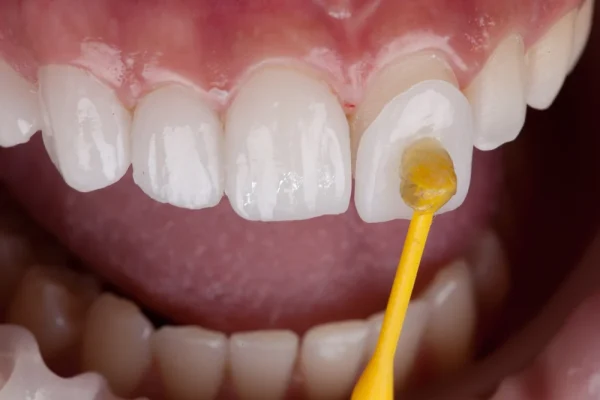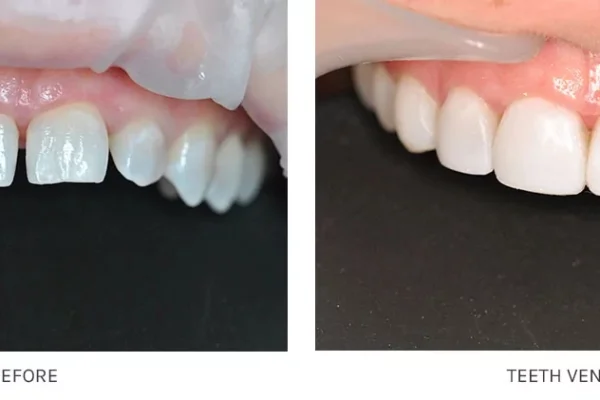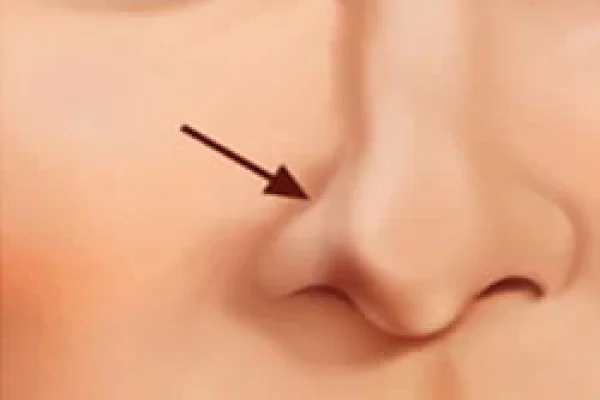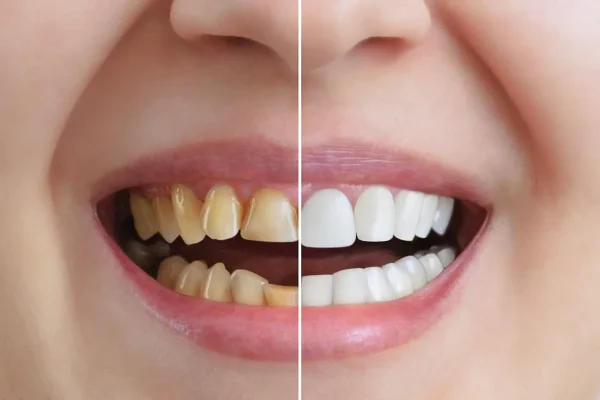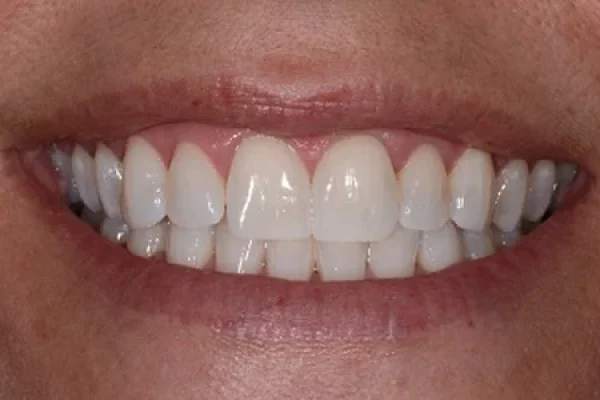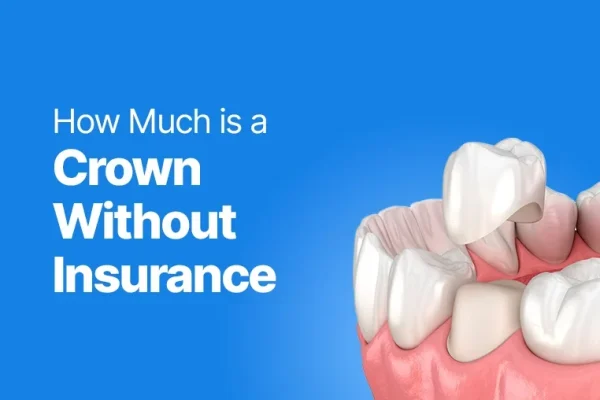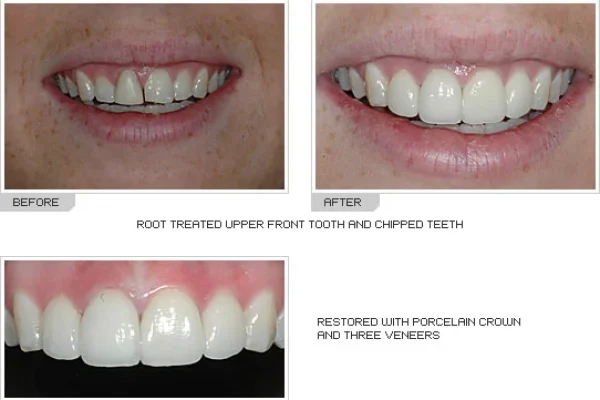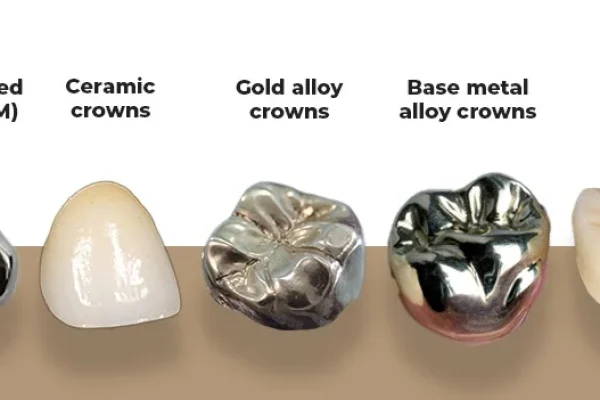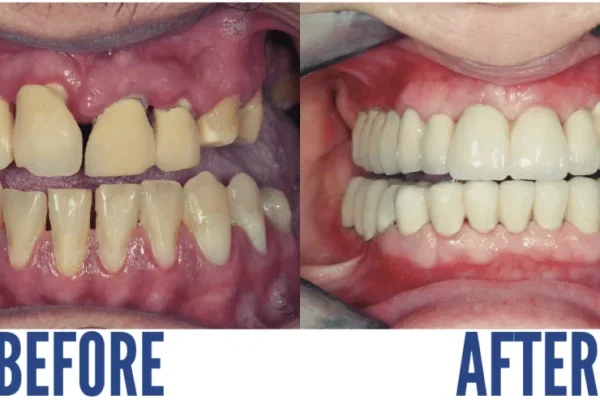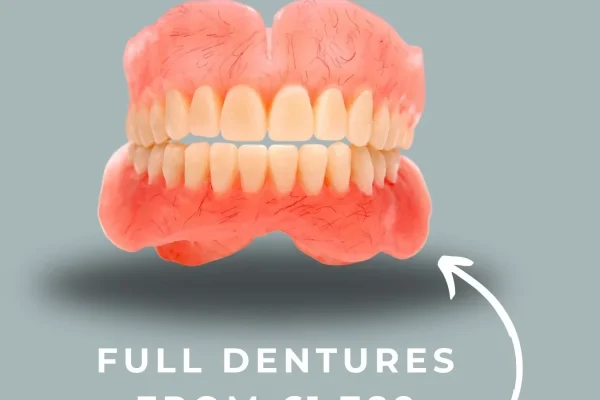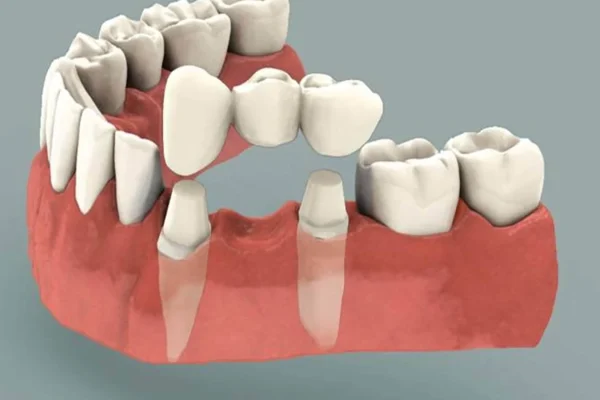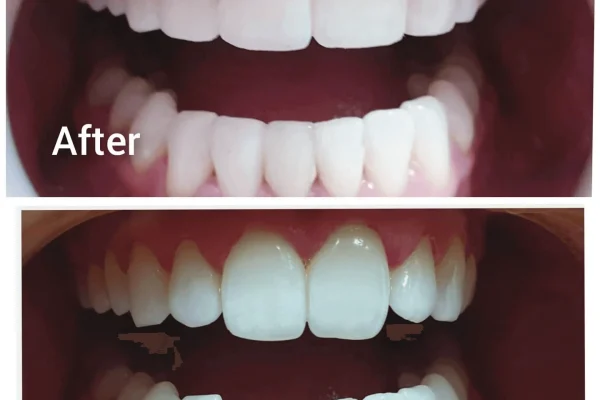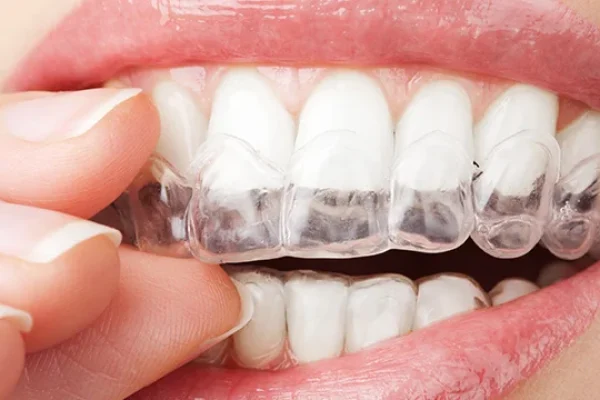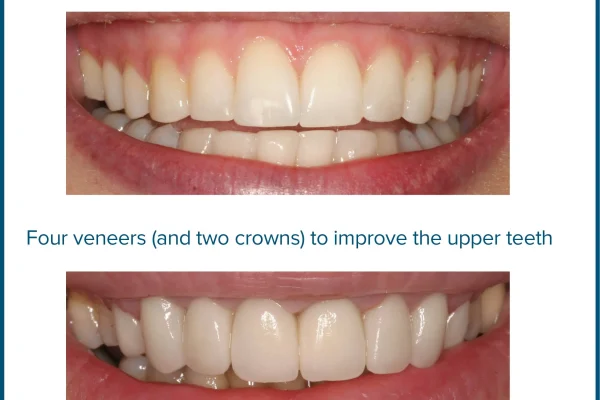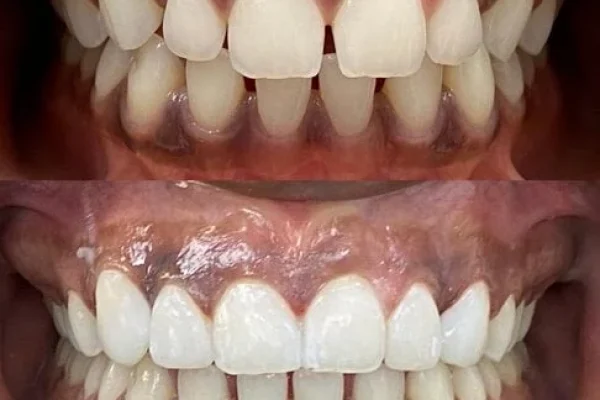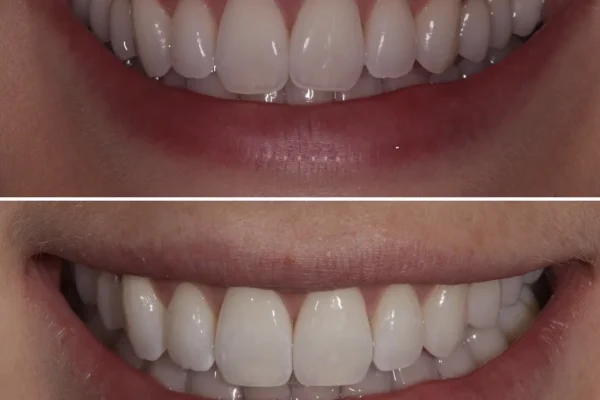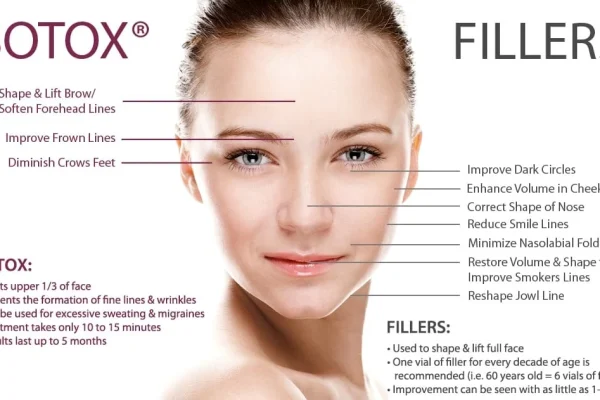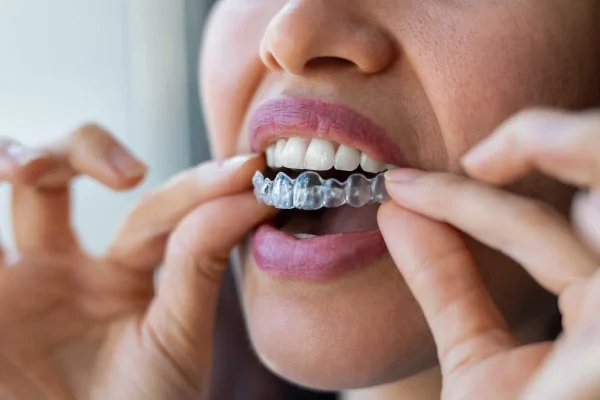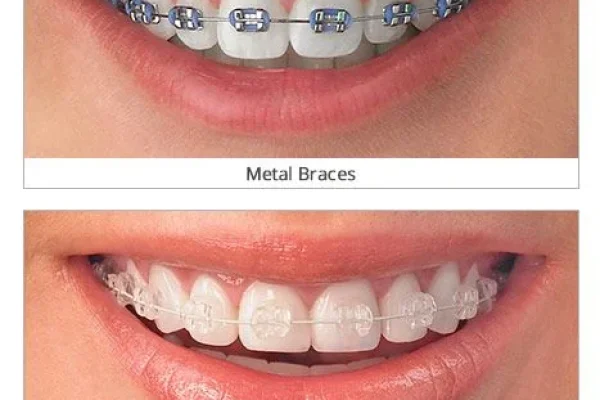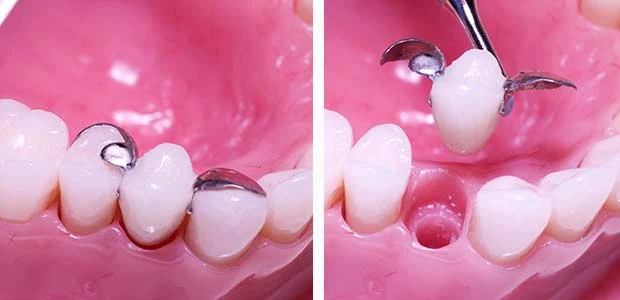
Table of Contents
ToggleKey Takeaways
-
- A single false tooth typically refers to a removable single tooth denture or “flipper”.
-
- Options include basic acrylic flippers (often temporary) and more durable flexible partials.
-
- Cost is generally more affordable than dental implants or bridges, varying by type and location (£250+).
-
- Procedure is non-invasive, involving impressions and fitting, usually taking a few weeks.
- Single tooth dentures are removable, require daily care, and offer less chewing stability than fixed options like implants, also they don’t prevent bone loss.
Understanding the Single False Tooth: What Are They Called?
Stepping into the world of dental prosthetics can feel a bit like learning a new language, especially when you’re trying to figure out what to call that singular artificial tooth you might need. It’s a common requirement, whether due to an unforeseen accident, a necessary extraction, or even a developmental issue resulting in a missing tooth from birth. This need for replacing just one missing unit has led to the development of specific dental appliances tailored precisely for this purpose. While the concept is straightforward – put a fake tooth where a real one used to be – the terminology can sometimes be a little confusing. Fundamentally, what we’re discussing is a prosthetic device designed to fill the void left by a single lost tooth, aiming to restore both the functional capabilities, such as biting and speaking, and the aesthetic appearance of your smile. It’s a focused solution, distinct from broader dental work like bridges that involve multiple teeth or full dentures that replace entire arches. Understanding the various names and the technical classification of this single-tooth replacement is the first step in navigating your options and communicating effectively with your dental professional. These terms often reflect the nature of the appliance – whether it’s removable, temporary, or designed for long-term use – and knowing them helps demystify the choices available to you when facing the prospect of replacing just one missing tooth, ensuring you can approach discussions about treatment with clarity and confidence, recognizing that there’s a specific, accessible solution out there for this common dental challenge.
What is a singular fake tooth called?
When you’re talking about a single prosthetic tooth used to fill the gap left by a missing natural tooth, the most common and straightforward dental terms you’ll encounter are “single tooth denture” or “one-tooth denture.” These names pretty much do exactly what they say on the tin – they describe a removable appliance designed to replace just one tooth. However, it’s worth noting that in many casual conversations, or particularly when discussing temporary options, people often use the term “flipper” or “flipper tooth.” While not the formal clinical designation for all types of single tooth replacements, “flipper” is a widely understood colloquialism, especially for the quick, often acrylic-based prosthetics used to maintain appearance temporarily. Technically speaking, any appliance that replaces one or more missing teeth and is designed to be removed by the wearer is classified as a “partial denture.” Therefore, a single tooth denture is, by definition, a specific type of partial denture crafted to replace just that one lone missing unit. This distinction is important because “partial denture” can also refer to devices replacing several teeth, whereas “single tooth denture” zeroes in on the precise nature of the replacement. So, while you might hear “flipper” thrown around, especially in the context of an immediate, post-extraction solution, “single tooth denture” or “one-tooth denture” are the more accurate and common terms used by dental professionals to describe this specific kind of removable prosthetic aimed at restoring the appearance and basic function where only one tooth is absent. Understanding this helps clarify discussions about treatment options, costs, and expectations, ensuring you and your dentist are on the same page about the nature of the appliance being considered to fill that individual gap in your smile effectively and efficiently.
What is a partial denture for one missing tooth?
A partial denture, in its most fundamental definition, is a removable dental appliance specifically engineered to replace one or more teeth when some natural teeth still remain in the mouth. It stands in contrast to a full denture, which is designed to replace an entire arch of teeth when none are left. When the need arises to replace only a single missing tooth, the dental solution becomes a partial denture specifically fabricated for that solitary vacancy. This appliance consists of a few key components: the artificial tooth itself, meticulously chosen and shaped to blend seamlessly with your existing dentition in terms of colour, size, and form; a base material, typically made from pink or sometimes clear acrylic resin, which is moulded to fit comfortably and snugly over your gum tissue where the tooth is missing, mimicking the natural gum line; and crucially, some form of retention mechanism, usually in the shape of clasps. These clasps are custom-designed to hook onto or grip adjacent natural teeth, providing the necessary support and stability to keep the partial denture firmly in place while you wear it. The design of the base and the placement of the clasps are critical – they must distribute chewing forces effectively and ensure the appliance doesn’t shift or come loose during everyday activities like speaking or smiling. Think of it as a small, targeted puzzle piece designed to complete your dental picture, anchored to the neighbouring pieces (your existing teeth). This type of partial denture offers a relatively straightforward, non-surgical method for addressing a single missing tooth, restoring both aesthetics and enabling some level of functional recovery, although it’s important to note that their stability and chewing efficiency are generally less than that offered by fixed solutions like bridges or implants. Their removable nature also means they require specific daily care routines, but for many, they represent an ideal balance of effectiveness, cost, and ease of procedure for replacing that single lost tooth.
What is a Flipper Denture?
Ah, the “flipper denture,” or simply a “flipper tooth.” This is one of those terms you hear tossed around quite a bit in the dental world, particularly when someone needs a quick, relatively inexpensive, and often temporary solution for a missing tooth. It’s essentially a very basic, lightweight partial denture, most commonly used to replace a single missing tooth, though sometimes they can replace two or three, especially in the front of the mouth. The structure is simple: an artificial tooth (or teeth) is embedded within a thin, often pink or gum-coloured acrylic base. This base is carefully moulded to fit the shape of your palate or the floor of your mouth, and it might include simple wire clasps that hook onto adjacent teeth for retention, though sometimes the fit relies solely on the snugness against the gum and palate. The term “flipper” is quite descriptive of their nature – while they can restore your smile’s appearance remarkably well, they are not typically designed for heavy chewing forces. Because they can sometimes feel less secure than more robust partials or fixed options, there’s a perception, and sometimes a reality, that they might ‘flip’ or dislodge if you bite down too hard or eat sticky foods. This is why they are frequently recommended as a transitional or cosmetic appliance – something to wear while an extraction site heals, while waiting for a permanent bridge or implant to be fabricated, or simply as a low-cost way to fill a visible gap. They are often fabricated relatively quickly compared to more complex dentures, making them an ideal immediate solution. While they offer undeniable benefits in terms of speed, cost, and aesthetics, their temporary nature means they are generally less durable, less stable for eating, and can sometimes irritate the gums or surrounding tissues if the fit isn’t perfect or if they’re worn for extended periods beyond their intended temporary purpose. Think of a flipper not as a long-term workhorse, but as a highly effective stand-in player, keeping your smile looking good until a more permanent solution can take the field.
What are Single Tooth Dentures?
Let’s clarify the terminology further and solidify the concept: “Single Tooth Dentures” is simply the plural, and arguably most formal and descriptive, way to refer to the removable dental prosthetic designed specifically to replace just one missing tooth. As previously touched upon, they are a particular type of partial denture. Unlike a complete or full denture, which replaces all teeth in either the upper or lower jaw, a single tooth denture focuses its attention on a single void within an otherwise dentally stable arch. The core purpose remains the same: to restore the appearance of the smile by filling the gap and to provide some level of functional replacement for the missing tooth, aiding in biting, speaking, and preventing adjacent teeth from drifting into the space. These appliances are custom-made for each individual patient. The process involves taking precise impressions or digital scans of your mouth, which allows a dental laboratory to fabricate a prosthetic tooth that matches the shape, size, and colour of your existing natural teeth as closely as possible. This artificial tooth is then mounted onto a gum-coloured base, usually made of acrylic or a more flexible thermoplastic material, which is contoured to fit comfortably over your gum tissue. Retention is achieved through clasps, which might be made of wire or a tooth-coloured material, designed to wrap around adjacent natural teeth, providing the necessary grip to hold the denture securely in place. A key characteristic of single tooth dentures, differentiating them from bridges or implants, is their removability. The wearer can easily take them out for cleaning, sleeping (as often recommended), or other purposes. This ease of removal is both a benefit (hygiene) and sometimes perceived as a drawback (stability compared to fixed options). They represent a popular choice due to their relatively lower cost and less invasive procedure compared to other tooth replacement methods, offering a viable solution for many people needing to replace just one lost tooth without committing to surgery or irreversible alteration of adjacent teeth.
What Does a Single Tooth Denture Look Like?
Imagine you have a gap where a tooth used to be. What comes to mind when you picture something filling that space? A single tooth denture is designed to be as inconspicuous as possible while doing its job. Visually, the most prominent part is, of course, the artificial tooth itself. This tooth is crafted from a durable dental-grade material, often acrylic or porcelain, and is painstakingly matched to the shade, size, and even the surface texture of your surrounding natural teeth. The goal is for this prosthetic tooth to blend in seamlessly, making it difficult for an observer to tell it’s not a natural part of your smile. Supporting this lone tooth is a base structure. For the most common type, the acrylic partial denture (the ‘flipper’), this base is typically made from pink acrylic resin, moulded to hug the contours of your gum line in the area of the missing tooth. This pink acrylic simulates the appearance of natural gum tissue, further helping the appliance blend in. If the denture is a flexible partial, the base and sometimes even the clasps are made from a translucent, gum-coloured thermoplastic material, which can be highly aesthetic as it blends with the underlying gum colour and the clasps are often less noticeable than metal ones. For some, there might be a cast metal framework (though less common for a single tooth unless part of a larger partial), which offers strength but means metal clasps are usually visible on the adjacent teeth. The retention mechanism, the clasps or wings that hold the denture in place, are a key visual component. These might be thin metal wires (often stainless steel or a cobalt-chromium alloy) designed to wrap around the contours of your natural teeth, or they could be tooth-coloured or gum-coloured clasps made from acrylic or the flexible material, depending on the denture type. While the aim is always discretion, the visibility of these clasps can vary and is often a factor people consider when choosing between different types of single tooth dentures or comparing them to other options like implants or bridges, which don’t involve external clasps on adjacent teeth. Ultimately, a well-made single tooth denture looks like a natural tooth emerging from a natural-looking gum, held in place by discreet supports that blend with your existing dental anatomy.
Can You Get A Denture For Just One Tooth?
Let’s cut straight to the chase: yes, unequivocally, absolutely yes. You can most certainly get a denture specifically designed to replace just one missing tooth. This might seem like a surprisingly simple question to answer with such emphasis, but it addresses a very common point of confusion. Many people associate the term “denture” with replacing multiple teeth or even a whole set, picturing the traditional image of a full plate. However, dental science has long offered solutions for replacing individual units, and a removable partial denture for a single tooth is a well-established and frequently used option. It’s not some niche, rarely available service; it’s a standard offering in dental practices around the globe, providing a readily accessible way to address a gap left by a single lost tooth. Whether that tooth was lost recently or years ago, whether it’s in the front or the back of your mouth, and regardless of the reason for its absence (decay, injury, extraction, etc.), a tailor-made prosthetic can be created. This availability makes single tooth dentures a crucial component in the spectrum of tooth replacement options. They serve as a vital alternative for individuals who may not be candidates for more complex surgical procedures like implants, whose adjacent teeth are unsuitable for anchoring a bridge, or perhaps most commonly, for those seeking a more cost-effective and less time-consuming solution compared to other methods. Their accessibility means that addressing a single missing tooth doesn’t necessarily require a major dental overhaul; a targeted, removable appliance is well within reach for most people seeking to restore the appearance and basic functionality of their smile.
Can you have a single false tooth?
Indeed, having a single false tooth, typically in the form of what dental professionals call a single tooth partial denture or colloquially a “flipper,” is a perfectly standard and widely available dental solution. The very purpose of these specific appliances is to address the loss of one individual tooth, filling the resulting gap in your dental arch. This capability is crucial for several reasons, making the single false tooth a common and valuable option in restorative dentistry. For starters, the loss of even one tooth, especially one visible when you smile or speak, can significantly impact a person’s self-confidence and willingness to interact socially. A single false tooth immediately restores this aesthetic completeness, allowing individuals to smile, laugh, and talk without feeling self-conscious about the gap. Furthermore, a missing tooth can affect oral function. While a single tooth denture might not provide the full chewing power of a natural tooth or an implant, it can help with basic biting and speaking, preventing issues like lisping that can sometimes occur with anterior tooth loss. Importantly, replacing a single missing tooth, even with a removable appliance, helps maintain the spacing of your remaining natural teeth. Without something occupying the space, adjacent teeth can gradually drift or tilt into the gap, leading to misalignment issues that can affect your bite (occlusion) and make future restorative work more complicated. The opposing tooth in the other jaw can also “super-erupt” or move downwards (or upwards in the lower jaw) into the space, further complicating the bite. Thus, having a single false tooth isn’t just possible; it’s a recommended course of action in many cases, serving both immediate cosmetic needs and contributing to the longer-term stability and health of your overall dental structure, offering a pragmatic and accessible way to handle a common dental problem effectively.
How Easy Can it Be to Get a Partial Denture for One Missing Tooth?
Compared to many other dental procedures, particularly surgical interventions like dental implants or preparations for fixed bridges that involve altering adjacent teeth, obtaining a partial denture for one missing tooth is generally considered a relatively straightforward and easy process. It typically involves fewer appointments with your dentist and avoids the surgical phase entirely. The primary steps revolve around taking precise measurements and impressions of your mouth. This is a non-invasive procedure, usually involving biting down on trays filled with a soft impression material or having a digital scanner capture the shape of your teeth and gums. This information is then sent to a dental laboratory, where skilled technicians custom-fabricate your single tooth denture. The fabrication process itself takes some time, usually a couple of weeks, as the artificial tooth needs to be matched perfectly to your existing teeth in terms of colour and shape, and the base needs to be meticulously crafted to fit the unique contours of your mouth. Once the denture is ready, you’ll return for a fitting appointment. This visit is crucial for ensuring the denture fits comfortably, the clasps provide adequate retention without causing undue pressure, and the bite is correct. Adjustments are often needed during this initial fitting and potentially in subsequent follow-up visits to ensure optimal comfort and function. Because the procedure avoids drilling into bone (like implants) or significantly shaping adjacent teeth (like traditional bridges), the clinical chair time is often minimal, and there’s typically little to no recovery period needed beyond getting accustomed to wearing the appliance. While the ease can vary slightly depending on the complexity of your individual mouth structure and the specific type of denture chosen (e.g., a simple acrylic flipper might be faster than a flexible partial), the overall journey to getting a single tooth denture is far less involved and less time-consuming than most other permanent tooth replacement options, making it a highly accessible solution for many.
What is The Procedure for Obtaining a Single Tooth Denture?
Embarking on the journey to replace a single missing tooth with a custom-made denture is a well-defined and typically smooth process involving a series of appointments with your dentist, culminating in the delivery and fitting of your new prosthetic. It’s a procedure that prioritizes accuracy in capturing the nuances of your oral anatomy to ensure the final appliance fits comfortably, looks natural, and functions effectively within the limitations of a removable prosthetic. The steps are designed to be as non-invasive as possible, focusing on creating a perfect replica of your missing tooth and designing a base that integrates seamlessly with your existing gums and teeth. From the very first consultation where your specific needs and suitability for this option are assessed, through the crucial phase of taking detailed impressions, the skilled craftsmanship in the dental laboratory, and finally, the precise fitting and adjustment stage, each step plays a vital role in the creation of a functional and aesthetic single tooth denture. The overall experience is considerably less involved than surgical procedures or irreversible alterations to adjacent teeth required by other replacement methods, making it a more approachable option for many. Understanding this procedural flow helps manage expectations regarding the timeline and the individual appointments needed, ensuring you’re prepared for each stage and can appreciate the care and precision that goes into creating this personalized dental solution, restoring not just a tooth but also confidence in your smile and ability to perform everyday oral functions with greater ease.
Steps In The Single Tooth Denture Procedure
The process of getting a single tooth denture typically unfolds over a few key appointments at your dental clinic, involving a collaborative effort between your dentist and a dental laboratory. It begins with the Initial Consultation: This is where you discuss your missing tooth situation with your dentist. They will perform a thorough examination of your mouth, take necessary X-rays or potentially digital scans to assess your overall oral health, the condition of your remaining teeth, and the area where the tooth is missing. Crucially, you’ll talk about your goals – whether it’s primarily for aesthetics, some functional improvement, or a temporary solution – and discuss the various tooth replacement options available to you, including the single tooth denture. If you decide this is the right path, the next step is scheduled. The second major step is Impression Taking: This is perhaps the most critical clinical appointment. Your dentist will take highly accurate molds or digital scans of your upper and lower jaws, as well as potentially record your bite (how your teeth come together). These impressions serve as the blueprint for the dental lab, providing them with an exact replica of your mouth’s structure, including the space where the tooth is missing and the shape of the adjacent teeth which will support the denture. Following the impressions, the molds are sent to a dental laboratory for Denture Fabrication: Here, skilled technicians use the impressions to design and custom-build your single tooth denture. They select an artificial tooth (or teeth) that matches the colour, size, and shape of your existing teeth and create the pink or clear acrylic base and any necessary clasps according to the dentist’s specifications. This is where the artistry and precision happen to make the denture look natural and fit correctly. The denture is then returned to the clinic for the Fitting and Adjustment appointment(s): This is your first chance to try on the completed denture. Your dentist will place it in your mouth, checking its fit against your gums and adjacent teeth, assessing your bite to ensure it doesn’t interfere with your occlusion, and evaluating the aesthetics. It’s common and expected that adjustments will be needed to ensure comfort and proper function. This might involve minor trimming of the base or adjusting the clasps. You might need one or two follow-up adjustment appointments as you wear the denture and your mouth adapts. Finally, the Follow-up and Instruction: Once the fit is satisfactory, your dentist will provide detailed instructions on how to properly insert and remove the denture, how to clean and care for it daily, and recommendations on when to wear it (e.g., not sleeping). They will also advise on regular dental check-ups to monitor your oral health and the fit of the denture over time. This phased approach ensures that the final single tooth denture is a personalized solution designed to integrate effectively with your unique oral landscape.
How long does a single tooth denture take?
Understanding the timeline for obtaining a single tooth denture is helpful for setting expectations, and generally speaking, the entire process, from that initial consultation to walking out with your fitted prosthetic, typically spans a period of a few weeks. It’s not an immediate, walk-in-and-out procedure, primarily because of the custom fabrication work required in a dental laboratory. The initial steps involving consultation and impression taking usually occur within a single appointment or two in quick succession at your dental clinic. These are relatively swift clinical visits. The bulk of the time is actually spent in the dental laboratory. Once your dentist sends the accurate impressions or digital files, the lab technicians get to work creating the artificial tooth, matching its characteristics to your existing dentition, and sculpting the base and retention components. This lab fabrication phase can take anywhere from one to three weeks, depending on the lab’s workload, the complexity of the design, and the materials used. After the denture is ready, it’s sent back to your dentist for the fitting appointment. This visit, and any necessary adjustment appointments that follow, add a few more days or another week or two to the total timeline, depending on scheduling and how quickly the denture settles in and any minor pressure spots are alleviated. So, summing it up, you’re generally looking at a total timeframe of approximately two to four weeks from your initial decision to get the denture to having it comfortably fitted and ready for regular use. It’s significantly faster than procedures requiring surgical healing, like dental implants (which can take several months), but does require patience during the lab phase. It’s worth noting that if your need is purely temporary and immediate (e.g., to fill a visible front tooth gap right after an extraction), your dentist might be able to provide a very basic, temporary ‘flipper’ more quickly, sometimes even within a few days or a week, though these are distinct from the more carefully crafted partial dentures intended for slightly longer or more regular use. Always consult your dentist for a precise estimated timeline based on your specific case and their lab’s turnaround.
How Much Does a False Tooth Cost?
Discussing the cost of dental work is often one of the most practical and pressing concerns for patients, and when it comes to replacing a single missing tooth with a false one, the price tag can vary considerably. It’s not a one-size-fits-all figure, as several factors come into play, influencing the final expense. The type of appliance chosen is a major determinant; a simple, temporary acrylic flipper will naturally cost less than a more durable flexible partial denture, which in turn might be less expensive than a partial denture with a metal framework (though metal frameworks are less common for only one tooth). The materials used in the fabrication – whether it’s standard acrylic, a specialized flexible resin, or a combination – also impact the price. Furthermore, the complexity of your specific dental case, including the condition of your remaining teeth and gums, can influence the cost, as more intricate designs or additional preparatory work might be needed. Geographic location plays a significant role; dental costs, including laboratory fees, vary widely from region to region and country to country. Even within the same area, different dental practices may have different fee structures based on their overhead, the level of specialization, and their relationship with dental labs. Therefore, providing a single definitive number is challenging. However, it is generally understood that replacing a single tooth with a removable denture option is typically the least expensive pathway compared to fixed alternatives like dental bridges or the significantly higher investment required for a dental implant and crown. This cost-effectiveness is one of the primary reasons why single tooth dentures remain a popular choice for many individuals seeking to address a missing tooth without undergoing a substantial financial outlay or committing to invasive procedures, making it a valuable option for budget-conscious patients.
How much is one single denture?
Providing an exact cost for one single denture, meaning a partial denture designed to replace just one tooth, is tricky because the price is influenced by several variables, as we’ve touched upon. However, we can offer a general range to give you an idea. For the most basic type, often an acrylic flipper, which is primarily intended as a temporary or aesthetic solution, the cost can start quite low, potentially ranging from a few hundred dollars or pounds. For example, some UK clinics might advertise prices starting from £250 for this type of basic appliance, as mentioned in the keywords. However, this is often for a very simple, single-tooth flipper. If you opt for a more robust or aesthetically pleasing type, such as a flexible partial denture, which uses a more advanced, comfortable material and often has less visible clasps, the cost will naturally be higher. These can range anywhere from £500 to £1500 or even more, depending on the factors like location, the lab used, and the dentist’s fees. A cast metal partial denture, while less common for just a single tooth unless integrating into a larger appliance, would be at the higher end of the partial denture spectrum due to the complexity of the metal framework fabrication. It’s crucial to get a specific quote from your dentist after they have examined your mouth and discussed the best type of single tooth denture for your situation. The price should ideally be a comprehensive quote covering the impressions, laboratory work, the denture itself, and the initial fitting and adjustments. Be wary of overly low prices, as they might indicate a very basic temporary appliance or hidden costs. Always discuss the materials and expected lifespan when comparing quotes. Remember that this is an investment in restoring your smile and function, and while cost is important, the quality of the fit and the materials used will impact comfort and longevity.
Partial Denture for One Tooth Cost
Delving deeper into the cost specifically for a partial denture designed to replace just one tooth, it’s important to reiterate that the material and design significantly dictate the price. As highlighted, a basic acrylic partial denture, often referred to as a flipper, sits at the lowest end of the cost spectrum. These are straightforward to fabricate and primarily serve aesthetic purposes or as temporary placeholders. Their cost can indeed begin around £250 in some regions, as indicated by the provided keywords, but could easily reach £500 or more depending on the clinic and location. Stepping up in material and comfort, flexible partial dentures command a higher price. Made from materials like Valplast or other thermoplastic resins, these dentures offer a more comfortable fit, are often lighter, and have gum-coloured or clear clasps that are less noticeable than metal ones. The fabrication process for flexible partials is more involved, leading to costs that typically range from £600 to £1800 or potentially higher. While cast metal partial dentures provide the greatest strength and durability, they are less frequently the go-to option for replacing only a single tooth unless there are specific biting forces or the need to integrate into a pre-existing partial framework. If a metal framework is deemed necessary for a single tooth, the cost would be on the higher end of the partial denture scale, potentially £1000 to £2500+, reflecting the complex casting process. Factors influencing these ranges further include the number of appointments needed for adjustments, whether any preliminary dental work (like cleaning or minor shaping of adjacent teeth) is required, the expertise of the dental technician fabricating the appliance, and again, the overarching influence of the clinic’s location and fee structure. Obtaining a detailed breakdown from your dentist explaining the costs associated with the chosen material and process is essential for a clear understanding of the investment required for your specific partial denture for one missing tooth.
How much do Single Tooth Dentures Cost?
To give a final, comprehensive overview of the cost associated with single tooth dentures, encompassing the various types and influencing factors, it’s best to think of it as a range that broadly falls below the expense of more permanent solutions like bridges and implants. At the most economical end, the temporary acrylic flipper for a single tooth might start from approximately $300-$600 USD (or the equivalent in other currencies like the £250 starting point mentioned). These are generally used for short-term cosmetic purposes or while waiting for other treatments. Moving towards options intended for slightly longer or more regular wear, a standard acrylic partial denture for one tooth might range from $600-$1200 USD. The more advanced and often more comfortable flexible partial dentures, made from materials like nylon resin, typically fall into a higher price bracket, commonly costing between $800-$2500 USD. As highlighted earlier, metal-based partials for a single tooth are less common but would likely be in a similar or higher range than flexible options due to manufacturing complexity. These figures are estimates and can vary dramatically based on geographical location (dental costs are significantly higher in some countries or major cities compared to others), the specific dental practice (their pricing, the lab they use), the dentist’s expertise, and the complexity of the individual patient’s case. Furthermore, the cost might not always include potential follow-up adjustment visits, although many dentists will include a certain number within the initial fee. It is imperative to get a detailed consultation and a written estimate from your dentist to understand the specific cost for the type of single tooth denture recommended for you. While generally less expensive than implants (which can range from $2000-$5000+ per tooth, including the crown) or bridges (often $1500-$5000+ depending on the number of units), the cost of a single tooth denture makes it an accessible and viable option for restoring a missing tooth for many individuals.
Understanding One-Tooth Denture Types and Options
When considering a removable appliance to replace a single missing tooth, it’s important to know that you aren’t limited to just one generic option. Much like choosing eyeglasses or clothing, there are different styles and materials available, each with its own set of characteristics, benefits, and trade-offs. The “one-tooth denture” isn’t a monolith; it’s a category that encompasses various types of partial dentures, primarily distinguished by the materials used for the base and the retention components, as well as their intended duration of use – whether they are meant to be a temporary placeholder or a more durable, albeit still removable, solution for the longer term. Understanding these different types is crucial because the choice impacts everything from the cost and comfort level to the aesthetics, durability, and ease of care. Each option is designed to address the core need of replacing a single tooth but approaches the task with different engineering philosophies and material science, leading to varying levels of stability, gum tissue compatibility, and visual integration with your natural smile. By familiarizing yourself with the common types, you can have a more informed discussion with your dentist about which option best aligns with your specific needs, expectations, budget, and oral health status, ensuring the chosen single tooth denture is the most appropriate fit for your individual circumstances, providing the desired balance of form and function for your unique situation.
What Are The Different Types Of Partial And Single Tooth Dentures?
Partial dentures, including those designed for a single tooth, come in a few main varieties, primarily classified by the material used for their base and framework. Understanding these types helps illuminate the options available for replacing a single missing tooth beyond just the basic concept. The most common types include: Acrylic Partial Denture (Often referred to as a “Flipper”): This is the simplest and typically the most economical type. It consists of an acrylic base, usually pink, onto which the replacement tooth is set. Wire clasps extending from the base wrap around adjacent natural teeth for retention. Flippers are often lightweight and are frequently used as temporary solutions, particularly for visible front teeth, to maintain aesthetics while waiting for a more permanent restoration or during the healing phase after an extraction. They are not designed for heavy chewing and can be more prone to breakage than other types. Flexible Partial Denture: These are made from a thermoplastic material, often nylon resin, which is more flexible and less rigid than acrylic. The base material is often translucent pink or clear, blending well with the gum tissue. A key advantage is that the clasps are also made from this flexible, gum-coloured material, making them much less visible than metal clasps, which enhances aesthetics. Flexible partials are generally considered more comfortable to wear due to their flexibility and lightness, and they are often a good option for patients who are allergic to acrylics or certain metals. They are more durable than acrylic flippers but may not be suitable for every situation, particularly if the missing tooth is in an area subjected to very high chewing forces. Cast Metal Partial Denture: These dentures have a metal framework (often a cobalt-chromium alloy) that provides significant strength and support. The artificial teeth are set in acrylic resin attached to this metal framework. While highly durable and stable, providing excellent retention and distributing chewing forces effectively, they are less commonly used for replacing only a single tooth unless it’s part of a design that involves replacing other teeth as well or if a very robust framework is needed. The metal clasps used for retention can sometimes be visible, which is a drawback for some patients, particularly for front teeth. Hybrid Designs: Sometimes, a combination of materials is used, such as a flexible clasp added to an acrylic base to improve aesthetics. The choice among these types for a single tooth depends on factors like cost, aesthetics, desired durability, the location of the missing tooth, the condition of adjacent teeth, and patient preference, all of which should be discussed thoroughly with your dentist to determine the most suitable option.
temporary dentures for one tooth
Focusing specifically on the concept of temporary dentures for one tooth brings us back squarely to the “flipper denture,” although other simple acrylic partials can also serve a temporary role. These appliances are designed with a distinct purpose and lifespan in mind: they are not intended to be permanent, long-term solutions for replacing a missing tooth. Instead, their primary function is often cosmetic and transitional. Imagine you’ve had a front tooth extracted due to decay or trauma. You’re naturally left with a very noticeable gap. While you and your dentist might decide that a dental implant or a bridge is the best long-term solution, these procedures take time – implants require healing periods, and bridges need adjacent teeth prepared and lab fabrication. A temporary flipper fills this gap immediately, allowing you to smile, speak, and interact socially without the embarrassment of a missing tooth. Beyond aesthetics, temporary single tooth dentures also serve a functional purpose in maintaining space. If a tooth is extracted, the teeth next to the gap can start to shift, and the tooth above or below can move down or up into the space. A temporary appliance helps prevent this drifting, keeping the space open and making subsequent placement of a permanent restoration easier. They are typically made quickly from acrylic, making them cost-effective. However, because they are meant to be temporary, they are generally less durable, less stable for chewing, and the fit may not be as precise or comfortable as a denture designed for long-term wear. They might have simple wire clasps which are visible but provide sufficient retention for light use. Patients are often advised to remove these temporary dentures when eating anything but soft foods and almost always when sleeping to allow the gum tissue to breathe and rest and to minimize the risk of breakage or accidental swallowing. While they offer a fantastic bridge between losing a tooth and getting a permanent replacement, their limitations mean they shouldn’t be viewed as a definitive solution and require careful handling.
What are the options for replacing a single missing tooth?
Replacing a single missing tooth is a common dental need, and fortunately, modern dentistry offers several distinct and effective options, each with its own advantages, disadvantages, procedural steps, costs, and suitability depending on the individual patient’s circumstances, oral health, and preferences. Understanding the full spectrum of possibilities is essential before making a decision. The primary options for replacing a single missing tooth are: 1. Removable Partial Denture (Single Tooth Denture / Flipper): This is a prosthetic tooth attached to a removable base, often with clasps that grip adjacent teeth. It’s the least invasive and typically the most affordable option, often used temporarily or when fixed options aren’t suitable. It’s removable for cleaning and usually sleep. 2. Dental Bridge (Fixed Partial Denture): This involves crowning the natural teeth on either side of the gap (called abutment teeth) and using these crowns to support a false tooth (pontic) suspended over the missing tooth space. The bridge is cemented onto the prepared abutment teeth and is not removable by the patient. Bridges offer good stability and aesthetics but require the irreversible preparation of potentially healthy adjacent teeth. 3. Dental Implant: Considered the most advanced and often preferred method when conditions are suitable. This involves surgically placing a titanium post into the jawbone to serve as an artificial tooth root. After the implant integrates with the bone, an abutment is attached, and a custom-made crown is placed on top. Implants are fixed, highly stable, feel and function much like a natural tooth, and crucially, they help preserve the jawbone, preventing the bone loss that occurs when a tooth root is missing. They do not rely on adjacent teeth for support. However, implants are the most expensive option, require surgery, and the process takes several months. 4. Resin-Bonded Bridge (Maryland Bridge): This is a more conservative type of bridge where the false tooth is bonded to the back surfaces of the adjacent teeth using metal or porcelain wings. It requires minimal or no preparation of the adjacent teeth but is generally less strong and less durable than traditional bridges and is usually only suitable for front teeth with minimal biting forces. The best approach is always to have a thorough consultation with your dentist. They can assess your specific oral health status, discuss the pros and cons of each option in your particular case, and help you decide on the most suitable method to effectively replace your single missing tooth, ensuring the best outcome for your long-term oral health and aesthetic goals.
How Does A Single Denture Stay In Place?
The mechanism by which a single tooth denture, or any removable partial denture for that matter, remains securely in the mouth is a clever piece of dental engineering. Unlike fixed restorations like bridges, which are cemented onto existing teeth, or implants, which are surgically fused with the jawbone, a removable denture relies on a combination of precise fit, mechanical retention, and sometimes minor physical forces to counteract gravity and the movements of the mouth during speaking and eating. It’s a delicate balance designed to provide stability without causing undue stress on the supporting structures – primarily the gum tissue and the adjacent natural teeth. Understanding how this appliance achieves its stability is key to appreciating its design and managing your expectations regarding its performance compared to fixed alternatives. The base of the denture, crafted to fit the unique contours of your gum ridge, plays a foundational role, while specialized attachments on the denture engage with your remaining natural teeth to provide the necessary grip and stability, preventing unwanted shifting or dislodgement during daily activities, thereby allowing you to wear it with a degree of confidence and functional utility, albeit different from the unwavering stability of a fixed tooth replacement.
How does a one-tooth denture fit?
A one-tooth denture fits into your mouth primarily by resting on the gum tissue in the area where the tooth is missing, while also being anchored to your adjacent natural teeth. The base of the denture, usually made of pink or clear acrylic or a flexible material, is custom-moulded precisely to the shape of your gum ridge. This base provides the primary support and helps to distribute any biting forces that might be placed on the prosthetic tooth down onto the gum tissue. A well-fitting base will sit snugly on the gums, potentially even creating a minor seal or suction effect, though this is much less significant than with full dentures. The crucial element for retention, however, comes from the way the denture engages with your remaining natural teeth located next to the gap. This engagement is typically achieved through components called clasps or retainers. These clasps are designed to wrap around or rest on specific contours of the adjacent teeth. For an acrylic partial or flipper, these are often simple wire clasps. For a flexible partial, they are gum-coloured or clear extensions of the base material. These clasps provide mechanical retention by subtly gripping the undercuts (areas where the tooth tapers slightly) on the adjacent teeth. Think of it like a skilled hand gently but firmly holding onto your natural teeth. The design of these clasps is critical; they must provide enough grip to hold the denture securely during normal activities but also be flexible enough to allow you to easily insert and remove the denture for cleaning. A properly designed and fitted single tooth denture should feel stable when in place, resting comfortably on the gums and anchored by the clasps, allowing you to bite and speak without the denture rocking, shifting, or feeling loose, although a period of adjustment is common as your mouth gets used to the feel of the appliance.
How does a single-tooth denture stay in?
The stability and retention of a single-tooth denture are achieved through a combination of factors, working together to counteract dislodging forces. At the forefront are the clasps or retainers. These are integral parts of the denture framework or base that wrap around or engage with the surfaces of the natural teeth adjacent to the missing tooth space. The design and placement of these clasps are critical. They exploit the natural contours and subtle undercuts of your teeth to create a mechanical grip, essentially holding the denture in place. Different materials offer different types of grip; wire clasps on acrylic dentures provide a direct grasp, while the flexible clasps on flexible partials use their inherent elasticity and snug fit around the tooth contours. The denture base itself also contributes to retention, particularly when it’s precisely moulded to the shape of your gum ridge. This close adaptation can create a minor suction effect and provides stability against horizontal and vertical movements. The base rests on the soft tissues (gums), and a good fit prevents the denture from lifting away easily. Furthermore, in the upper jaw, a portion of the base might extend onto the palate, and the close adaptation of the base to the palate can provide additional stability through suction, though this is more relevant for larger partials or full dentures. The muscles of your cheeks and tongue can also play a role, consciously or subconsciously helping to keep the denture in place as you become accustomed to wearing it. Finally, gravity is a factor, especially for lower dentures, which need sufficient retention to overcome the downward pull. For a single tooth denture, especially in the lower jaw, the clasps and precise base fit are paramount to stability. The key to the denture staying in securely is the precise interaction between these components – the snug fit of the base on the gums and the firm, yet gentle, grip of the clasps on the supporting natural teeth. This combination allows the denture to resist the forces applied during speech, swallowing, and cautious eating, providing the necessary functional stability for a removable appliance.
Can You Eat and Sleep With a Single Tooth Denture?
These are two of the most practical questions wearers of removable dental prosthetics tend to ask, and the answers are nuanced, depending heavily on the type of single tooth denture you have, its fit, and your dentist’s specific recommendations. Unlike natural teeth or fixed restorations like implants or bridges, which are designed to be integral parts of your oral structure during all activities, removable dentures require different considerations regarding wear time and function, particularly during eating and sleeping. Understanding the capabilities and limitations of your specific single tooth denture type is crucial for maximizing its lifespan, ensuring your comfort, and maintaining the health of your underlying gum tissue and supporting teeth. It’s not a simple yes or no; it involves appreciating the design intent of the appliance and adhering to the best practices for its use and care, which are generally provided by your dental professional based on the specific characteristics of your denture and your individual oral health needs, ensuring you get the most out of your prosthetic while safeguarding your overall dental well-being during its wear.
Can you eat with a single tooth denture?
While it is possible to eat with most single tooth dentures, especially those designed for longer-term use like flexible partials, it’s important to understand that they are not designed to withstand the same heavy chewing forces as your natural teeth or fixed restorations like implants or bridges. For basic acrylic flippers, often used as temporary aesthetic solutions, it is generally strongly advised to remove them while eating anything other than very soft foods. These flippers are typically less stable and more fragile, and biting down hard on them or sticky/hard foods can easily cause them to break or become dislodged, potentially leading to embarrassment or even accidental swallowing. For more stable single tooth partial dentures (like flexible or cast metal base types), you can usually eat with them in place, but caution is still recommended. Dentists often advise cutting food into smaller pieces, chewing slowly, and trying to distribute the chewing pressure evenly across both sides of your mouth, rather than concentrating heavy biting forces directly on the single false tooth. Avoid particularly hard, sticky, or crunchy foods on the side with the denture. The reason for this caution is that removable partial dentures get their support partly from resting on the gum tissue and partly from anchoring to adjacent teeth. The gum tissue is not designed to bear significant chewing load like a tooth root anchored in bone, and excessive force can lead to soreness, tissue irritation, or even damage to the underlying bone ridge over time. Furthermore, undue stress on the clasps can weaken them or put excessive pressure on the supporting natural teeth. So, while your single tooth denture helps restore some chewing ability and esthetics during meals, it’s best viewed as an aid rather than a full replacement for the chewing efficiency of a natural tooth, and sensible eating habits are required to protect the appliance and your mouth.
Can you sleep with a single tooth denture?
The general recommendation from dental professionals regarding sleeping with any removable denture, including a single tooth denture, is usually no. While some individuals may choose to do so out of convenience or habit, it is widely advised to remove your single tooth denture before going to bed. There are several important reasons behind this recommendation, primarily focused on maintaining oral hygiene, allowing your gum tissues to recover, and protecting the denture itself. Wearing a denture continuously, including overnight, can trap food particles and bacteria against your gum tissue and natural teeth, creating an environment ripe for bacterial growth. This increases the risk of gum disease, fungal infections (like thrush), and decay on your remaining natural teeth. Removing the denture for several hours each day, ideally overnight, allows your gum tissues to rest from the pressure of the denture base. Continuous pressure can reduce blood flow to the gums, potentially leading to inflammation, soreness, and changes in the shape of the underlying bone ridge over time, which can affect the future fit of the denture. Allowing the tissues to breathe and recover promotes their health. Removing the denture overnight also provides an ideal time to clean it thoroughly. Dentures, being porous to some degree, can harbour plaque and bacteria. Soaking them in a recommended denture cleaning solution overnight helps to disinfect them and remove stubborn debris that brushing alone might miss, contributing to better oral hygiene and preventing odours. Furthermore, sleeping with a denture increases the small risk of accidentally dislodging it, potentially damaging it or, in rare cases, inhaling or swallowing it, which could pose a choking hazard. Therefore, while it might feel strange initially to sleep without your false tooth, the benefits to your oral health, the longevity of your denture, and your safety make removing it overnight the standard and highly recommended practice.
Can you eat with a temporary tooth?
When we talk about a “temporary tooth” in the context of replacing a single missing tooth, we are very often referring specifically to the simple acrylic partial denture commonly known as a flipper. These temporary appliances are, as their name suggests, intended for short-term use, primarily to serve an aesthetic purpose or to maintain space after an extraction while a more definitive treatment plan is being pursued. Given their temporary nature and construction, the answer to whether you can eat with a temporary tooth like a flipper is usually accompanied by significant caveats or even a strong recommendation against it. Flippers are typically made from relatively thin acrylic and are not designed with the robust structure needed to withstand the forces of chewing, especially on anything firm, chewy, or sticky. Their retention is also often less secure than more permanent partial dentures. Attempting to eat with a flipper, particularly biting directly onto the artificial tooth or chewing with force on that side, significantly increases the risk of breaking the denture, damaging the wire clasps, or causing the flipper to pop out of place, which can be inconvenient, embarrassing, and potentially dangerous if swallowed. For these reasons, most dentists will advise patients who have a temporary flipper to remove it when eating anything other than very soft foods that require minimal chewing. The primary function of a flipper while eating is to fill the space for appearance if you are, for example, eating out socially. Even then, extreme caution is necessary. Think of a temporary tooth or flipper as being for ‘show, not for chew.’ Its main job is to keep your smile looking complete and potentially hold the space for a future restoration; relying on it for significant chewing function is generally ill-advised and can lead to its premature failure.
Is a Single Tooth Denture Comfortable?
The question of comfort is subjective and depends significantly on several factors, including the individual’s tolerance, the quality of the denture’s fit, the type of material used, and how well the wearer adapts to having an appliance in their mouth. It’s not uncommon to experience an initial period of adjustment when you first start wearing a single tooth denture. After all, it’s a foreign object in your mouth, and your tongue, cheeks, and gums need time to get used to its presence. During this initial phase, you might notice some slight bulkiness, a feeling of pressure, or even minor sore spots where the denture base or clasps are in contact with your tissues. However, the goal of a well-made single tooth denture is ultimately to be comfortable enough for regular wear, restoring function and aesthetics without causing persistent pain or significant irritation. Any ongoing discomfort, especially sharp pain or persistent soreness, is a signal that something is not right and needs to be addressed by your dentist. This might mean the denture needs an adjustment to relieve a pressure point, the fit needs refinement, or in some cases, it might indicate that a different type of appliance or solution might be more suitable for your specific oral anatomy and needs, ensuring that comfort doesn’t remain an elusive goal but becomes a tangible reality with the right care and adjustments, allowing you to wear the prosthetic with ease.
Do single tooth dentures hurt?
In an ideal scenario, a properly designed, fabricated, and fitted single tooth denture should not cause persistent pain. However, it’s entirely normal to experience some level of discomfort or soreness when you first begin wearing it. Your mouth is highly sensitive, and introducing a new object, even one custom-made to fit, requires an adjustment period. You might feel pressure where the denture base rests on your gums, or where the clasps engage with your natural teeth. Your tongue might feel awkward and constantly explore the new appliance, leading to some irritation. Minor sore spots can develop on the gum tissue, especially if there are any slight imperfections in the denture’s fit or if a particular area is experiencing increased pressure. This initial soreness is typically mild and should gradually subside as your mouth adapts, usually within a few days or a couple of weeks. However, if you experience sharp pain, significant, persistent soreness that doesn’t improve, or visible irritation or ulceration of your gum tissue, this is not normal and indicates an issue that requires attention. The most common cause of discomfort beyond the initial adjustment phase is a poor fit. A denture might need adjustments to relieve pressure points, refine the contours of the base, or modify the clasps. Sometimes, the bite might need to be adjusted if the new tooth is hitting too hard against the opposing teeth. It’s crucial to communicate any ongoing pain or discomfort to your dentist. They can identify the source of the problem, make the necessary adjustments to the denture, and ensure that it fits comfortably and functions correctly without causing harm or undue stress to your oral tissues. So, while a little initial discomfort is common, ongoing pain means something is wrong and needs fixing.
Are Single Dentures Uncomfortable?
Whether single dentures are uncomfortable is a subjective experience that varies greatly from person to person and depends heavily on the specific type of denture and the quality of its fit. It’s not accurate to label all single dentures as inherently uncomfortable, but it is true that they can feel less natural and potentially less comfortable than fixed tooth replacements like implants or bridges, simply because they are removable appliances resting on soft tissues and supported by clasps on adjacent teeth rather than being anchored directly into the bone or cemented onto prepared teeth. The initial period of adaptation is almost universally associated with some level of discomfort – a feeling of bulkiness, awareness of the clasps, or minor gum soreness. This phase typically lasts for a few days to a couple of weeks. The degree of discomfort during and after this period is influenced by several factors. Flexible partial dentures, for instance, are often perceived as more comfortable than rigid acrylic ones because the material is less stiff and the clasps can be less irritating. A denture with a precisely fitting base that distributes pressure evenly across the gum tissue will be significantly more comfortable than one with an ill-fitting base or rough spots. The design and material of the clasps also play a role; well-designed clasps should provide retention without pinching or causing excessive pressure on the supporting teeth. Ultimately, the skill of the dentist in taking accurate impressions and the quality of the dental lab in fabricating the denture to those specifications are paramount to achieving a comfortable fit. While some people adapt quickly and barely notice their single tooth denture, others may find the sensation of wearing a removable appliance persistently noticeable. However, significant or ongoing discomfort is usually a sign that the denture needs adjustment. If you find your single denture uncomfortable beyond the expected initial phase, consult your dentist; adjustments can often dramatically improve the fit and comfort level, making the denture much more wearable and less of a burden.
How Long Does a Single Tooth Denture Last?
Understanding the expected lifespan of a single tooth denture is crucial for managing your expectations and evaluating its value as a tooth replacement option. Unlike natural teeth or potentially life-long restorations like dental implants, removable partial dentures, including those for a single tooth, have a finite lifespan. They are subject to wear and tear from daily use, exposure to oral acids and bacteria, and the physical process of being inserted and removed. Furthermore, the fit of a denture is contingent upon the shape of the underlying gum tissue and supporting teeth, and these biological structures can change over time. The materials used in the denture’s construction also play a significant role in determining its durability and how well it withstands the rigors of the oral environment. Therefore, while a single tooth denture offers a viable and often cost-effective solution for replacing a missing tooth, it’s essential to anticipate that it will likely need to be repaired, relined, or eventually replaced after a certain number of years, a factor that distinguishes it from more permanent types of dental restorations and should be factored into your long-term dental care planning.
How long does a single denture last?
The typical lifespan of a single tooth denture, meaning a partial denture replacing just one tooth, is generally estimated to be between 5 to 10 years. However, this is a broad range, and how long your specific denture lasts can vary considerably based on several important factors. Firstly, the material it’s made from plays a huge role. A simple acrylic flipper, often used as a temporary solution, might only be expected to last from a few months up to perhaps 1-2 years, as they are less durable and not designed for long-term use. More robust flexible partial dentures or acrylic partials with stronger designs are intended for longer wear, typically falling within that 5-10 year range. Secondly, how well you care for it is paramount. Proper daily cleaning to remove plaque and food debris, careful handling to avoid dropping or damaging it, and storing it correctly when not in use (often in water or a soaking solution to prevent drying out and warping) can significantly extend its life. Conversely, poor hygiene or rough handling will drastically shorten it. Thirdly, changes in your mouth affect the fit over time. The gum tissue and underlying bone where the tooth was missing can resorb or shrink slightly over the years. Your remaining natural teeth might shift minimally. These changes, even if subtle, can alter the fit of the denture, making it loose or uncomfortable. A loose denture is not only less functional but can also cause damage to the underlying tissues or the supporting teeth. Sometimes, a denture can be “relined” (adding new base material to refit it to your current gum contours) or “rebased” (replacing the entire base) to improve the fit as your mouth changes, potentially extending its usability. However, there comes a point when the overall wear and tear on the materials (teeth yellowing or wearing down, clasps weakening, base becoming brittle) necessitate a complete replacement of the denture to ensure optimal function, comfort, and oral health. Regular dental check-ups are essential for monitoring the fit and condition of your denture and determining when it’s approaching the end of its useful life.
Which single-tooth denture is the longest-lasting?
When considering which type of single-tooth denture offers the longest lifespan, the primary factor is the material and design aimed at durability and resistance to wear. Among the common types of removable single-tooth prosthetics, those incorporating a more robust framework or made from resilient materials tend to last longer. A simple acrylic flipper, as discussed, is the least durable and shortest-lasting, intended more for temporary aesthetic use than long-term function. Their lifespan is limited, often measured in months to a year or two if treated with extreme care and used only for aesthetics, as the acrylic is more prone to fracture and the wire clasps can bend or break. Flexible partial dentures offer improved durability compared to basic acrylic flippers. The thermoplastic material is more resilient to breakage from dropping, and the flexible clasps are less likely to snap than thin wire. With proper care, a flexible single tooth denture can often last within the higher end of the typical 5-10 year range for partials, assuming the underlying oral structures don’t change dramatically. However, the most durable type of partial denture, generally speaking, is one with a cast metal framework (like cobalt-chromium). While less commonly fabricated for only a single missing tooth unless part of a larger, comprehensive partial, if a single tooth denture were made with a metal base/framework and acrylic teeth, the metal framework itself is highly resistant to fracture and deformation, providing a very stable foundation. The acrylic teeth set within the framework are still subject to wear, and the fit can change as oral tissues change, but the core structure is the longest-lasting among partial denture types. Thus, if maximum durability of the appliance structure is the priority for a removable option (and a metal framework is suitable for the location of the missing tooth and patient’s needs), a cast metal partial for one tooth would theoretically be the longest-lasting in terms of structural integrity, potentially exceeding the 10-year mark with good care and stable oral conditions, although tissue changes often necessitate replacement before the framework itself fails. In practice, for just one tooth, flexible partials are often the longest-lasting commonly used option that balances aesthetics and comfort with durability compared to flippers.
How Do You Take Care Of A Single Tooth Denture?
Proper care and maintenance are absolutely non-negotiable if you want your single tooth denture to remain hygienic, comfortable, functional, and last for its expected lifespan. Just like natural teeth need regular cleaning and check-ups, a prosthetic appliance requires specific attention to prevent the buildup of bacteria, food particles, and stains, which can lead to bad breath, oral infections, and damage to both the denture and your remaining natural teeth and gums. It’s not just about keeping the denture looking good; it’s fundamentally about protecting your oral health and preserving the investment you’ve made in your smile. Establishing a consistent daily cleaning routine and following your dentist’s specific instructions are the pillars of effective denture care. This regimen is typically straightforward but requires diligence and the use of appropriate cleaning materials to avoid damaging the prosthetic while ensuring it remains clean and sanitary for placement back into your mouth, contributing significantly to both your comfort and the longevity of the appliance over time.
How to look after a single tooth denture?
Taking care of your single tooth denture is relatively simple but requires a consistent daily routine to ensure hygiene, maintain its appearance, and extend its lifespan. Here are the essential steps for looking after your single tooth denture: Clean After Eating: After meals, it’s a good idea to remove your denture and rinse it under running water to remove loose food particles. This prevents food from drying onto the surface and makes the more thorough cleaning easier later. Brush Daily: You must brush your denture daily to remove plaque, food debris, and stains. Use a brush specifically designed for dentures, which often has different bristle shapes, or a soft-bristle toothbrush. Crucially, use a non-abrasive denture cleaner or mild soap and water. Never use regular toothpaste, as most toothpastes are too abrasive and can scratch the surface of the denture, creating microscopic pits where bacteria can hide and potentially dulling the polished finish. Gently brush all surfaces of the denture, including the prosthetic tooth, the pink base, and the clasps. Handle with Care: Always handle your denture over a basin of water or a folded towel. Dentures are fragile, and dropping them onto a hard surface is a common cause of breakage. Be gentle when brushing the clasps so as not to bend or damage them, as bent clasps can affect the fit and retention. Soak Daily: Most types of single tooth dentures benefit from being soaked daily in a denture cleaning solution. This helps to disinfect the denture, kill bacteria and fungi, and loosen stubborn deposits. Follow the instructions on the denture cleanser product. Make sure the cleanser is appropriate for the material of your denture (e.g., some cleansers are not suitable for flexible partials or those with metal components). Soaking is often done overnight when you remove the denture for sleep. Rinse Thoroughly After Soaking: Before putting the denture back in your mouth after soaking in a cleaning solution, rinse it thoroughly under running water to remove any residual cleaning solution. Chemicals from the solution can cause irritation if not fully rinsed off. Store Properly When Not Wearing: When you are not wearing your denture (most commonly overnight), it’s important to keep it moist to prevent it from drying out and losing its shape or becoming brittle. Store it in water or a mild denture soaking solution as recommended by your dentist or the cleanser manufacturer. Regular Dental Check-ups: Continue to see your dentist regularly. They will check the condition and fit of your denture, examine your remaining natural teeth for decay or gum disease, and check the health of the tissues under the denture. Adjustments to the denture may be needed over time as your mouth changes. By following these steps diligently, you can keep your single tooth denture clean, functional, and looking its best for as long as possible, while also protecting your oral health.
Single Tooth Denture: Pros, Cons, and Suitability
Making the decision about the best way to replace a single missing tooth involves weighing the advantages and disadvantages of each available option against your individual needs, health status, and financial considerations. The single tooth denture, while not a fixed or permanent solution, offers a distinct set of benefits that make it a highly attractive choice for many people. However, like any prosthetic, it also comes with certain limitations and potential drawbacks that are important to acknowledge upfront. Understanding both the positive aspects – such as its accessibility and non-invasive nature – and the negative ones – like potential stability issues or the need for daily removal – allows you to form a realistic picture of what owning and wearing a single tooth denture entails. Furthermore, identifying the scenarios and patient profiles for whom this option is particularly well-suited helps clarify whether it aligns with your own situation, guiding you towards an informed choice that addresses your missing tooth effectively while fitting within the broader context of your oral health goals and lifestyle, ensuring the chosen solution provides the most appropriate balance of form, function, and practicality for your circumstances.
What are the disadvantages of single tooth dentures?
While single tooth dentures offer several benefits, particularly in terms of cost and procedure, they do come with certain disadvantages compared to fixed tooth replacement options like bridges or implants. Understanding these drawbacks is crucial for setting realistic expectations. One significant disadvantage is their removable nature. Unlike bridges or implants which are fixed in the mouth, a single tooth denture needs to be taken out for cleaning and usually overnight. This removability means they can sometimes feel less secure or stable than fixed options, especially during eating or vigorous activities. There’s also a small risk of misplacing or accidentally damaging the denture when it’s out of the mouth. Reduced Chewing Efficiency is another drawback. While they restore some ability to bite and chew, single tooth dentures, particularly flippers, do not provide the same chewing power or stability as natural teeth, implants rooted in bone, or even well-supported bridges. They rest on the gums, which are not designed for heavy load-bearing, limiting the types of foods you can comfortably or safely eat with the denture in place. Potential Impact on Speech and Comfort: While most people adapt quickly, some individuals might initially experience slight difficulties with speech (e.g., lisping) or find the denture base and clasps feel bulky or intrusive in their mouth, leading to a period of discomfort or perpetual awareness of the appliance’s presence. This discomfort is usually manageable with adjustments but is inherent to having a removable prosthetic. Aesthetics can be compromised, particularly with traditional acrylic partials that use visible wire clasps which can be noticeable on the adjacent natural teeth. While flexible partials offer less conspicuous clasps, achieving perfect aesthetic integration can sometimes be challenging depending on the location of the missing tooth and the design required for retention. Hygiene and Maintenance require daily diligence; food particles can easily get trapped under the denture base, necessitating thorough cleaning of both the denture and your remaining mouth tissues to prevent odour, infection, and gum problems. Finally, and perhaps most importantly from a long-term oral health perspective, single tooth dentures do not prevent bone loss in the jawbone where the tooth root is missing. Without the stimulation of a tooth root or an implant, the bone in that area will gradually resorb over time, potentially leading to changes in facial structure and affecting the fit of the denture or future replacement options down the line, a significant difference compared to implants which actively preserve bone density.
Is a single tooth denture worth it?
Determining if a single tooth denture is “worth it” is a highly personal calculation, weighing the cost and benefits against individual needs, circumstances, and alternative options. For many people, a single tooth denture is absolutely worth it, providing a valuable and accessible solution to a missing tooth. Its primary value lies in its cost-effectiveness. Compared to dental implants or bridges, single tooth dentures are significantly less expensive, making tooth replacement financially feasible for individuals who might otherwise be unable to afford treatment. This accessibility is a major factor in its “worth” for many. Another significant benefit is the non-invasive procedure. Getting a single tooth denture does not require surgery (like implants) or the grinding down of adjacent healthy teeth (like traditional bridges). This makes it a less daunting and less irreversible option for many patients. Furthermore, single tooth dentures offer a quick solution to restore aesthetics, especially for visible front teeth. The fabrication process is relatively fast compared to the healing and integration time required for implants, allowing the patient to regain their smile’s appearance relatively quickly, which can have an immediate positive impact on confidence and social interactions. They also serve a functional purpose, aiding in basic biting and speaking, and helping to prevent adjacent teeth from drifting. While they have limitations (less stability, less chewing power, does not prevent bone loss), for someone whose primary goals are to fill a visible gap, restore some basic function, avoid surgery or altering adjacent teeth, and do so within a limited budget, a single tooth denture often represents excellent value. It provides a noticeable improvement in appearance and function at a fraction of the cost of alternatives. It’s “worth it” as a practical, accessible, and relatively quick way to address the immediate and aesthetic consequences of losing a single tooth, even if it’s not the most permanent or functionally superior solution available in the long run, providing a bridge (pun intended!) between having a gap and potentially pursuing more complex treatment later, or serving as a suitable long-term choice for those whose needs and budgets align with its capabilities.
When You Should Consider Single-Tooth Denture?
Considering a single tooth denture becomes a particularly relevant option in several specific scenarios, especially when balancing factors like cost, speed, invasiveness, and future treatment plans. You should strongly consider a single tooth denture if you are looking for the most budget-friendly method to replace a single missing tooth. It is consistently the least expensive option among dentures, bridges, and implants, making it accessible for individuals with financial constraints. Another key scenario is when you need a temporary solution. If you’ve just had an extraction and are planning to get an implant or bridge in the future, but need something to fill the gap aesthetically and hold the space during the healing period, a temporary single tooth flipper is an excellent interim measure. It prevents teeth shifting and restores your smile while you wait for the permanent restoration. A single tooth denture is also a good choice if you want to avoid surgery (like implants) or avoid altering your adjacent natural teeth (like traditional bridges require). For patients who are medically compromised and not good candidates for surgery, or who simply prefer not to have their healthy teeth ground down, a removable partial denture offers a non-invasive alternative. Furthermore, if the adjacent teeth to the gap are not strong enough or healthy enough to support a bridge, or if there are no teeth behind the gap to anchor a bridge to, a single tooth denture becomes a viable option when an implant might not be possible or desired. Finally, if your primary goal is esthetic improvement – simply filling a visible gap to feel more confident smiling and speaking – and you don’t require the full chewing power or bone preservation benefits of an implant, a single tooth denture can effectively meet this need with a relatively simple procedure. In essence, it’s a practical and valuable option when cost, speed, avoiding invasiveness, serving as a temporary fix, or limitations on other treatments make it the most suitable pathway for replacing that solitary missing tooth effectively and conveniently.
Who Needs A Single Tooth Denture?
The individuals who typically benefit most from or are candidates for a single tooth denture are those who have lost one tooth and are seeking a replacement option that is relatively quick, affordable, and non-invasive compared to fixed solutions. This includes people for whom cost is a primary concern, as the single tooth denture is generally the most budget-friendly method of replacing a missing tooth. It makes tooth replacement accessible even when implants or bridges are financially out of reach. Individuals who need a temporary solution are prime candidates. For example, someone waiting for an implant site to heal, an adolescent who has lost a permanent tooth but is still growing (as implants can’t be placed until jaw growth is complete), or someone undergoing other dental work might use a single tooth flipper as a placeholder for aesthetic and space-maintenance purposes. Those who wish to avoid surgical procedures or who have medical conditions that contraindicate oral surgery (making implants unsuitable) are also good candidates. Similarly, people who want to preserve their adjacent natural teeth and avoid the irreversible preparation required for a traditional dental bridge will find the single tooth denture appealing, as it relies on surface contact with neighbouring teeth via clasps rather than crowns. Patients whose adjacent teeth are not strong or healthy enough to support a bridge might also find a single tooth denture to be the most viable option. Essentially, anyone missing a single tooth who prioritizes affordability, a less invasive procedure, speed of fabrication, or needs a temporary aesthetic fix, and who is comfortable with a removable appliance requiring daily care and offering less chewing stability than fixed options, could be considered a good candidate for a single tooth denture. It’s a solution tailored for specific needs where the benefits of accessibility and ease outweigh the advantages of permanence and stability offered by alternative restorative methods.
Single Tooth Dentures Vs. Alternatives Like Implants
When faced with the prospect of replacing a single missing tooth, the choice isn’t limited to just one option. While we’ve focused extensively on the single tooth denture, it’s crucial to position it within the broader landscape of restorative dentistry and understand how it compares to other prevalent methods. The two primary alternatives that often come up in discussion are dental bridges and dental implants. Each of these solutions takes a fundamentally different approach to filling the gap left by a missing tooth, involving varying levels of invasiveness, different timelines, disparate costs, and ultimately, offering distinct levels of function, stability, and longevity. Comparing the single tooth denture directly against these alternatives, particularly dental implants which are frequently hailed as the modern gold standard, provides a clearer picture of the trade-offs involved. This comparison helps potential patients understand why they might choose one option over another based on their specific clinical situation, financial capacity, long-term oral health goals, and personal preferences, allowing for a truly informed decision that goes beyond just filling the space and considers the overall impact on their dental health and quality of life in the years to come, navigating the decision matrix with confidence and clarity.
How to replace one missing tooth?
Replacing a single missing tooth is a common requirement in restorative dentistry, and fortunately, there are several proven methods available, each tailored to different needs, budgets, and clinical situations. The choice of which method is best depends on a variety of factors, including the location of the missing tooth, the health and condition of the adjacent teeth and supporting jawbone, the patient’s overall health, financial resources, and personal preferences regarding fixed versus removable appliances. The primary options for replacing a single missing tooth are: 1. Removable Partial Denture (Single Tooth Denture / Flipper): This is a prosthetic tooth attached to a removable base, often with clasps that grip adjacent teeth. It’s the least invasive and typically the most affordable option, often used temporarily or when fixed options aren’t suitable. It’s removable for cleaning and usually sleep. 2. Dental Bridge (Fixed Partial Denture): This involves crowning the natural teeth on either side of the gap (called abutment teeth) and using these crowns to support a false tooth (pontic) suspended over the missing tooth space. The bridge is cemented onto the prepared abutment teeth and is not removable by the patient. Bridges offer good stability and aesthetics but require the irreversible preparation of potentially healthy adjacent teeth. 3. Dental Implant: Considered the most advanced and often preferred method when conditions are suitable. This involves surgically placing a titanium post into the jawbone to serve as an artificial tooth root. After the implant integrates with the bone, an abutment is attached, and a custom-made crown is placed on top. Implants are fixed, highly stable, function much like a natural tooth, and crucially, they help preserve the jawbone, preventing the bone loss that occurs when a tooth root is missing. They do not rely on adjacent teeth for support. However, implants are the most expensive option, require surgery, and the process takes several months. 4. Resin-Bonded Bridge (Maryland Bridge): This is a more conservative type of bridge where the false tooth is bonded to the back surfaces of the adjacent teeth using metal or porcelain wings. It requires minimal or no preparation of the adjacent teeth but is generally less strong and less durable than traditional bridges and is usually only suitable for front teeth with minimal biting forces. The best approach is always to have a thorough consultation with your dentist. They can assess your specific oral health status, discuss the pros and cons of each option in your particular case, and help you decide on the most suitable method to effectively replace your single missing tooth, ensuring the best outcome for your long-term oral health and aesthetic goals.
Single tooth denture vs implant
Comparing a single tooth denture and a dental implant highlights the significant differences between a removable prosthetic and a fixed, surgically integrated solution for replacing a single missing tooth. Let’s break down the key distinctions: Procedure: Getting a single tooth denture is a non-surgical process involving impressions and fitting appointments. It’s relatively quick and minimally invasive. A dental implant, conversely, requires oral surgery to place the titanium post into the jawbone, followed by a healing period (osseointegration), and then further steps to attach the abutment and crown. This process takes several months. Cost: Single tooth dentures are considerably less expensive than dental implants. The cost of an implant includes the surgical placement, the implant post itself, the abutment, and the crown, adding up to a significantly higher investment compared to a removable denture. Stability and Function: This is where implants shine. Once integrated, a dental implant is incredibly stable, mimicking the root of a natural tooth. This provides excellent chewing efficiency, allowing you to eat virtually any food without worry. A single tooth denture, being removable and resting partly on the gums, offers less stability and significantly reduced chewing power. It can feel less secure and may restrict certain foods. Bone Health: A crucial difference. Dental implants stimulate the jawbone like a natural tooth root, helping to prevent the bone loss (resorption) that occurs when a tooth is missing. A single tooth denture does not stimulate the bone and cannot prevent this resorption, which can lead to changes in facial structure and affect future dental options. Impact on Adjacent Teeth: A single tooth denture uses clasps that grip adjacent teeth for retention, which can sometimes put pressure on these teeth or become visible. An implant is a standalone restoration; it does not rely on or affect the adjacent teeth. Maintenance: A single tooth denture is removed daily for cleaning and usually soaked overnight. An implant crown is cleaned like a natural tooth with brushing and flossing around it. Lifespan: Dental implants are designed to be a potentially lifelong solution with proper care. Single tooth dentures typically need to be replaced every 5-10 years (or sooner for temporary types) due to wear and changes in the mouth. In summary, while a single tooth denture is a more accessible, faster, and less invasive option primarily for aesthetics and basic function, a dental implant offers superior stability, chewing function, bone preservation, and longevity, representing a more significant investment in a permanent, tooth-like replacement. The choice depends heavily on priorities, budget, clinical suitability, and willingness to undergo surgery.
Frequently Asked Questions About single false tooth
What is a singular fake tooth called?
When you’re talking about a prosthetic designed to replace just one missing tooth, the most common and technically accurate terms used by dental professionals are “single tooth denture” or “one-tooth denture.” These names clearly indicate that the appliance is a removable prosthetic specifically fabricated to fill the gap left by a solitary lost tooth. However, it’s very common to hear the term “flipper” or “flipper tooth” used, particularly in less formal settings or when referring to the simpler, often temporary, acrylic versions of these single tooth dentures. While “flipper” isn’t the official clinical term for all types of single tooth partials, it’s a widely understood colloquialism. Technically, any removable appliance that replaces one or more teeth when some natural teeth remain is classified as a “partial denture,” so a single tooth denture is fundamentally a specific type of partial denture. Understanding these terms helps you communicate effectively with your dentist and understand the different options being discussed. “Single tooth removable partial denture” is the most precise technical description, but “single tooth denture” or “one-tooth denture” are the usual go-to terms. The term “false tooth” itself is a general descriptor for any artificial tooth used in dentistry, whether it’s part of a denture, bridge, or implant crown, but when referring specifically to the removable appliance for one tooth, the more specific terms apply. Knowing this terminology allows for clearer discussions about the type of prosthetic being considered, its intended use (temporary vs. longer-term), and its characteristics, ensuring you and your dental team are always on the same page regarding the specific nature of the appliance you are discussing or receiving to address your missing tooth situation effectively.
Can You Get A Denture For Just One Tooth?
Yes, absolutely and unequivocally, you can get a denture designed to replace just one missing tooth. This is a very common and standard dental solution offered to patients who have lost a single tooth and are looking for replacement options. It’s a specific type of removable partial denture, custom-made to fit the individual’s mouth. Many people initially associate the term “denture” with appliances that replace multiple teeth or an entire arch, leading to the misconception that they might not be available for just a solitary gap. However, dental technology and practice have long accommodated the need for single tooth replacement with removable prosthetics. This option is widely accessible and serves as a crucial part of the spectrum of tooth replacement solutions, particularly valuable for its relative affordability and non-invasive procedure compared to alternatives like dental implants or bridges. So, if you have a single missing tooth, whether it’s visible in your smile or not, a removable single tooth denture is definitely a viable and readily available option to discuss with your dentist. It’s a fundamental component of restorative dentistry, providing a practical way to restore both the aesthetic appearance and some functional ability to the area where the tooth is absent, preventing issues like teeth shifting and improving confidence. The ease with which this type of prosthetic can be fabricated and fitted makes it a go-to solution for many individuals seeking to address the problem of a single lost tooth without embarking on more complex or costly treatments, confirming that indeed, a denture for just one tooth is very much a possibility.
How Much Does a False Tooth Cost?
The cost of a single false tooth, specifically referring to a single tooth denture (or one-tooth partial denture/flipper), varies significantly based on several factors, preventing a single universal price tag. The most basic and temporary option, the acrylic flipper, is the least expensive, potentially starting from a few hundred dollars or pounds (as low as £250 in some UK practices mentioned in keywords) and ranging up to around $500-$800 depending on location and clinic. This type is simple to make and meant for short-term use. Moving up, more durable acrylic partials or flexible partial dentures designed for longer wear cost more, typically ranging from $600 to $2500 or sometimes even higher. Flexible partials, made from advanced thermoplastic materials, are often pricier than standard acrylic due to material costs and fabrication techniques, but offer better comfort and aesthetics (less visible clasps). Less common for a single tooth, a cast metal partial framework would be on the higher end of the partial denture cost spectrum, often $1000+. Key factors influencing these costs include the type of material chosen, the complexity of your specific case, the fees charged by your dentist and their chosen dental laboratory, and crucially, your geographical location (dental costs vary significantly by region and country). The price quoted should generally include the impressions, laboratory work, the denture itself, and the initial fitting and necessary adjustments. It’s always essential to get a specific, detailed quote from your dentist after they have examined your mouth and recommended a specific type of single tooth denture based on your needs and suitability. While more expensive options like implants and bridges can cost several thousands per tooth, the single tooth denture remains the most accessible price point for many people needing to replace just one missing tooth.
How Long Does a Single Tooth Denture Last?
The lifespan of a single tooth denture is not indefinite and depends heavily on the type of denture, how well it is cared for, and changes occurring in the wearer’s mouth over time. A general expectation for a conventional single tooth partial denture designed for regular use (not just temporary) is typically between 5 to 10 years. However, a simple acrylic flipper, which is primarily intended as a temporary or aesthetic solution, has a much shorter lifespan, often only lasting from a few months up to 1-2 years, as it is less durable and not designed to withstand long-term functional demands. More robust flexible partial dentures or acrylic partials with stronger designs are intended for longer wear, typically falling within that 5-10 year range. Sometimes, a denture can be “relined” (adding new material to the base) or “rebased” (replacing the entire base) to improve the fit as your mouth changes, potentially extending its usability. However, there comes a point when the overall wear and tear on the materials (teeth yellowing or wearing down, clasps weakening, base becoming brittle) necessitate a complete replacement of the denture to ensure optimal function, comfort, and oral health. Regular dental check-ups are essential for monitoring the condition and fit of your denture and determining when it’s approaching the end of its useful life.
Is a Single Tooth Denture Comfortable?
The comfort level associated with wearing a single tooth denture is highly variable and influenced by individual factors, the specific type of denture, and the precision of its fit. While a properly made and fitted single tooth denture should ultimately be comfortable enough for regular wear without causing persistent pain, an initial adjustment period is almost universally experienced. When you first start wearing the denture, it’s common to feel a sense of bulkiness, awareness of the appliance in your mouth, and potentially some minor pressure or soreness on the gum tissue where the base rests or where the clasps engage with adjacent teeth. Your tongue and cheek muscles will need time to adapt to the presence of the new prosthetic. This initial discomfort is typically mild and should gradually subside over a few days or up to a couple of weeks as your mouth gets used to the denture. However, if you experience sharp pain, significant, lingering soreness, or develop visible sore spots or ulcers on your gums, this is not normal adaptation and indicates a problem with the denture’s fit. The most common cause of ongoing discomfort is a pressure point where the denture base or a clasp is pressing too hard on the tissues or a tooth. In such cases, it is crucial to return to your dentist for adjustments. Minor modifications to the denture’s acrylic base or clasps can often dramatically improve the fit and eliminate the source of discomfort. Flexible partial dentures are often perceived as more comfortable than rigid acrylic ones due to their inherent flexibility and often lighter weight, leading to quicker and easier adaptation for some wearers. While a removable single tooth denture may never feel exactly like your natural tooth, a well-fitting one should integrate comfortably enough into your mouth to allow for relatively unrestricted speaking, smiling, and cautious eating without causing pain or significant irritation, making comfort achievable with the right appliance and professional care.





